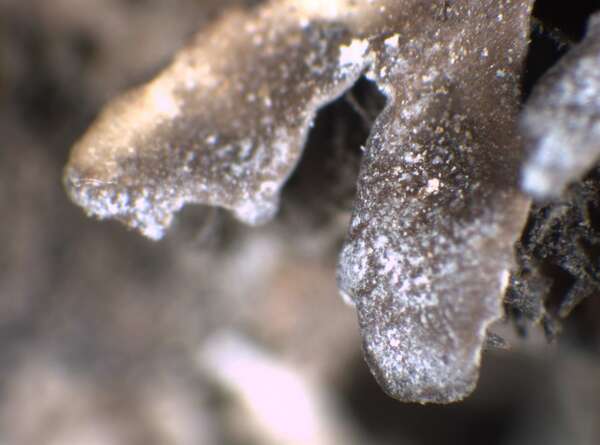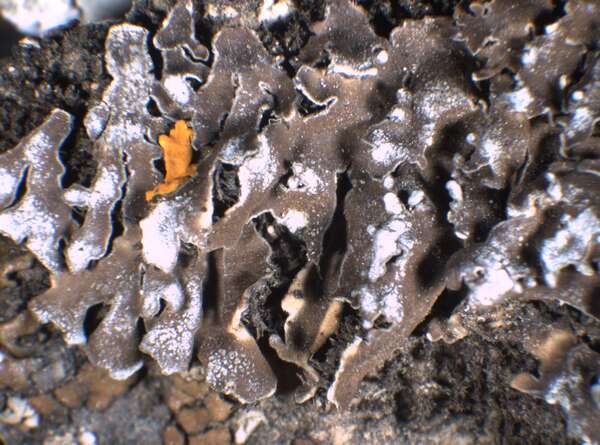Physconia petraea (Poelt) Vězda & Poelt
in Vezda, Sched. ad Lich. Sel. Exs., 36: 7 (nr. 899), 1970. Basionym: Physconia muscigena var. petraea Poelt - Nova Hedwigia, 12: 123, 1966.
Synonyms:
Distribution: N - TAA, Lomb (Valcuvia & al. 2003), Piem (TSB 32672), VA (Piervittori & Isocrono 1999), Emil (Valcuvia & Delucchi 2001, Fariselli & al. 2020), Lig (Steiner, Lich. Alpium 269: Otte & al. 2002). C - Tosc (Benesperi & Lastrucci 2007, Lastrucci & al. 2009), Sar (Nöske 2000, Rizzi & al. 2011, Neuwirth 2018). S - Cal (Puntillo 1996), Si (Nimis & al. 1996b).
Description: Thallus foliose, heteromerous, dorsiventral, closely attached, forming rather regular, up to 4 cm wide patches. Lobes 1-2(-3) mm broad, markedly rigid, elongate, flattened, divided into flat, adpressed or weakly ascending smaller lobules. Upper surface grey to grey-brown, but often densely and coarsely white-pruinose, Lower surface whitish at margin, black in central parts, with black, weakly and often indistinctly squarrose, long, thread-like rhizines. Upper cortex paraplectenchymatous; medulla white; lower cortex irregularly prosoplectenchymatous. Apothecia very rare, lecanorine, to 5 mm across, with a dark but often white-pruinose disc and an often lobulate thalline margin. Ascospores and pycnidia not observed. Photobiont chlorococcoid. Spot tests: cortex and medulla K-, C-, KC-, P-, UV-. Chemistry: without lichen substances, Note: on base-rich siliceous rocks and epilithic mosses in dry-warm situations; known only from southern Europe, and in need of further study.
Growth form: Foliose, narrow lobed
Substrata: rocks
Photobiont: green algae other than Trentepohlia
Reproductive strategy: mainly sexual
Poorly known taxon in need of further study
Commonnes-rarity: (info)
Alpine belt: absent
Subalpine belt: extremely rare
Oromediterranean belt: absent
Montane belt: extremely rare
Submediterranean belt: extremely rare
Padanian area: absent
Humid submediterranean belt: extremely rare
Humid mediterranean belt: extremely rare
Dry mediterranean belt: absent

Predictive model
Herbarium samples
Growth form: Foliose, narrow lobed
Substrata: rocks
Photobiont: green algae other than Trentepohlia
Reproductive strategy: mainly sexual
Poorly known taxon in need of further study
Commonnes-rarity: (info)
Alpine belt: absent
Subalpine belt: extremely rare
Oromediterranean belt: absent
Montane belt: extremely rare
Submediterranean belt: extremely rare
Padanian area: absent
Humid submediterranean belt: extremely rare
Humid mediterranean belt: extremely rare
Dry mediterranean belt: absent

Predictive model
| Herbarium samples |
 INDEX FUNGORUM
INDEX FUNGORUM
 GBIF
GBIF
 DOLICHENS
DOLICHENS




